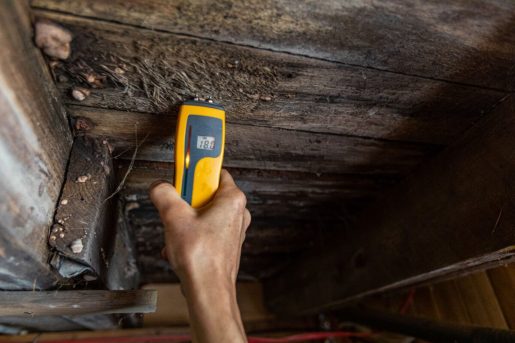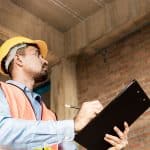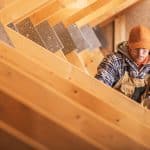As a homeowner or potential home buyer in Mid-Missouri, you want to ensure that your property is safe, functional, and valuable. That’s where a home inspection comes in. A comprehensive home inspection by a qualified Missouri home inspector can give you insights into the condition of your property, identify any potential problems, and offer solutions for repairs or upgrades. In this guide, we will explore everything you need to know about home inspections and how they can benefit you.
1: Understanding Home Inspections: An Overview for Home Buyers
Home inspections are an essential step in the home buying process. They provide buyers with a detailed report on the condition of the property, including potential issues that may require attention. In this chapter, we will go over the basics of home inspections, including what they are, what they cover, and what to expect during the inspection process.
First, it’s important to understand what a home inspection is. A home inspection is a non-invasive, visual examination of a property’s overall condition. The inspection typically covers the major systems and components of the home, including the roof, foundation, HVAC, plumbing, electrical, and more. The purpose of the inspection is to identify any potential problems that could affect the safety, livability, or value of the property.
During the inspection, the home inspector will examine each system and component of the home in detail. They will look for any signs of damage, wear and tear, or other issues that could impact the property. The inspector may also use specialized tools or equipment to evaluate certain areas, such as moisture meters to check for water damage.
Once the inspection is complete, the inspector will provide the buyer with a detailed report that outlines their findings. This report will typically include a summary of the condition of each system and component, any issues that were identified, and recommendations for repairs or further evaluation. Buyers can then use this report to negotiate repairs or pricing with the seller, or to make an informed decision about whether or not to proceed with the purchase.
In summary, a home inspection is a critical step in the home buying process. By providing buyers with insights into the condition of a property, it can help them make informed decisions and avoid costly surprises down the road.
2: Pre-Listing Inspections: Maximizing the Value of Your Home
While home inspections are often thought of as a tool for home buyers, they can also benefit sellers. A pre-listing inspection, conducted before the home is put on the market, can help sellers identify any potential issues that could impact the sale. In this chapter, we will explore the benefits of pre-listing inspections and how they can help sellers maximize the value of their home.
One of the primary benefits of a pre-listing inspection is that it allows sellers to address any issues before the home goes on the market. By identifying potential problems early on, sellers can take steps to repair or upgrade the property, which can increase its value and appeal to buyers. This can also help sellers avoid any surprises or delays during the selling process.
In addition to helping sellers identify potential issues, pre-listing inspections can also give buyers confidence in the property. By providing a detailed inspection report upfront, sellers can demonstrate that they are transparent and proactive about the condition of the home. This can help build trust with buyers and lead to a smoother, more successful sale.
Another benefit of pre-listing inspections is that they can help sellers price their home more accurately. By having a clear understanding of the condition of the property, sellers can set a realistic price that reflects its true value. This can help attract more qualified buyers and lead to a quicker sale.
Overall, pre-listing inspections can be a valuable tool for sellers looking to maximize the value of their home. By identifying potential issues, building trust with buyers, and setting an accurate price, sellers can increase their chances of a successful sale.
3: Common Issues Found in Home Inspections and How to Fix Them
While every home is different, there are certain issues that tend to be more common in home inspections. By understanding these issues and how to fix them, homeowners can take proactive steps to maintain their property and prevent potential problems down the road. In this chapter, we will explore some of the most common issues found in home inspections and how to address them.
One common issue found in home inspections is water damage. This can be caused by leaks in the roof, plumbing, or foundation, or by issues with the drainage system. If left unaddressed, water damage can lead to mold growth, structural damage, and other serious issues. To address water damage, homeowners should identify the source of the problem and repair it promptly. This may involve repairing a leaky roof or pipe, regrading the yard to improve drainage, or installing a sump pump or French drain.
Another common issue found in home inspections is electrical problems. This can include outdated or faulty wiring, overloaded circuits, and other safety concerns. To address electrical issues, homeowners should hire a qualified electrician to evaluate the system and make any necessary repairs or upgrades. This may involve rewiring the home, replacing outdated fixtures, or upgrading the electrical panel.
Other common issues found in home inspections include HVAC problems, foundation issues, and plumbing leaks. To address these issues, homeowners should consult with a qualified contractor or specialist in the respective field. In some cases, repairs or upgrades may be necessary to ensure the safety and functionality of the home.
By addressing these common issues and taking proactive steps to maintain their property, homeowners can avoid potential problems down the road and ensure the long-term value and livability of their home.
4: DIY Home Inspections: Pros and Cons
While hiring a qualified home inspector is typically the best way to ensure a thorough and accurate inspection, some homeowners may choose to conduct their own DIY inspections. In this chapter, we will explore the pros and cons of DIY home inspections and what homeowners should consider before taking on this task.
One of the primary benefits of DIY home inspections is cost savings. By conducting their own inspection, homeowners can save the money they would otherwise spend on hiring a professional inspector. Additionally, some homeowners may feel more comfortable and confident conducting their own inspection, as they are familiar with their own home and its history.
However, there are also several drawbacks to DIY home inspections. First and foremost, homeowners may not have the training or expertise necessary to identify all potential issues. Professional inspectors have a keen eye for detail and are trained to spot even the most subtle signs of problems. In contrast, homeowners may miss important issues or misinterpret their significance.
Another potential drawback of DIY home inspections is the risk of liability. If a homeowner misses a major issue during their inspection, they may be held liable for any resulting damages. Professional inspectors carry insurance and are typically protected from such liability, whereas homeowners may not have this same protection.
Finally, DIY home inspections can be time-consuming and stressful for homeowners. Conducting a thorough inspection requires a significant investment of time and energy, and can be particularly challenging for those who are unfamiliar with the process. In contrast, hiring a professional inspector can free up homeowners’ time and help reduce stress during the buying or selling process.
Overall, while DIY home inspections may be a viable option for some homeowners, it is important to carefully weigh the pros and cons before taking on this task. Homeowners should consider their own level of expertise and comfort, as well as the potential risks and benefits, before deciding whether to conduct their own inspection or hire a professional.
5: What to Expect During a Home Inspection
For many homeowners, the home inspection process can be a source of anxiety and uncertainty. In this chapter, we will explore what to expect during a home inspection and how homeowners can prepare for this important step in the buying or selling process.
A typical home inspection usually lasts between two and four hours, depending on the size and complexity of the property. During this time, the inspector will thoroughly evaluate the home’s systems and structure, looking for any signs of damage or potential issues. This may include inspecting the roof, exterior walls, foundation, electrical and plumbing systems, HVAC system, and more.
Homeowners can help ensure a smooth inspection process by preparing their home in advance. This may include decluttering and cleaning the home, making sure all utilities are on and easily accessible, and removing any pets from the premises.
During the inspection, homeowners may be asked to accompany the inspector as they evaluate different areas of the home. This can be a valuable opportunity for homeowners to learn more about their property and gain insights into any potential issues.
At the end of the inspection, the inspector will provide a detailed report outlining any issues or concerns they identified during the inspection. Homeowners can use this report to negotiate repairs or other concessions with buyers or to address any issues before putting their home on the market.
Overall, the home inspection process is a crucial step in the home buying or selling process, and it is important for homeowners to understand what to expect and how to prepare. By working with a qualified and experienced inspector, homeowners can gain peace of mind knowing that their property has been thoroughly evaluated and any potential issues have been identified.
6: Common Issues Found During Home Inspections
During a home inspection, the inspector will thoroughly evaluate the property to identify any potential issues. While every inspection is unique, there are some common issues that tend to arise in many homes. In this chapter, we will explore some of the most common issues found during home inspections.
- Roof Issues
- The roof is one of the most important components of any home, and issues with the roof can be costly to repair. Common roof issues include missing or damaged shingles, leaks, and improper flashing.
- Electrical Problems
- Electrical issues can pose a serious safety hazard and are a common issue found during home inspections. This may include outdated wiring, overloaded circuits, and improper grounding.
- Plumbing Issues
- Plumbing problems can lead to leaks, water damage, and other costly repairs. Common plumbing issues include leaky pipes, low water pressure, and improper drainage.
- Structural Issues
- Structural issues can pose a serious safety hazard and are typically costly to repair. This may include issues with the foundation, walls, or framing.
- HVAC Issues
- The HVAC system is responsible for heating and cooling the home, and issues with this system can be costly to repair. Common HVAC issues include malfunctioning thermostats, dirty filters, and leaking ductwork.
By understanding these common issues, homeowners can better prepare for their home inspection and address any potential issues before putting their home on the market.
7: Tips for Choosing a Home Inspector
Choosing a qualified and experienced home inspector is a crucial step in the home buying or selling process. In this chapter, we will explore some tips for choosing a home inspector.
- Check for Certification
- Look for a home inspector who is certified by a reputable organization, such as the International Association of Certified Home Inspectors (InterNACHI) or the American Society of Home Inspectors (ASHI).
- Read Reviews
- Read reviews from past clients to get a sense of the inspector’s level of expertise and professionalism.
- Ask for References
- Ask the inspector for references from past clients and follow up with those references to learn more about their experience.
- Ask about Experience
- Ask the inspector about their level of experience and how many inspections they have conducted.
- Check for Insurance
- Make sure the inspector carries liability insurance to protect against any potential issues that may arise during the inspection.
By following these tips, homeowners can choose a qualified and experienced home inspector and gain peace of mind knowing that their property has been thoroughly evaluated.
Wrapping Up: Why Choose ARC Home Inspections in Mid-MissouriFinal Thoughts
In this guide, we have explored the importance of home inspections and the role of a home inspector in the buying and selling process. We have covered a range of topics, including the benefits and drawbacks of DIY home inspections, what to expect during a home inspection, common issues found during inspections, and tips for choosing a home inspector.
By working with a qualified and experienced home inspector, homeowners can gain peace of mind knowing that their property has been thoroughly evaluated and any potential issues have been identified. Whether buying or selling a home, a home inspection is a crucial step in the process, and homeowners should carefully consider their options and work with a trusted professional to ensure a smooth and successful transaction.
Uncover Hidden Issues Before It’s Too Late!
Hire ARC Home InspectionsTo Help Protect Your Investment & Avoid Costly Surprises.













